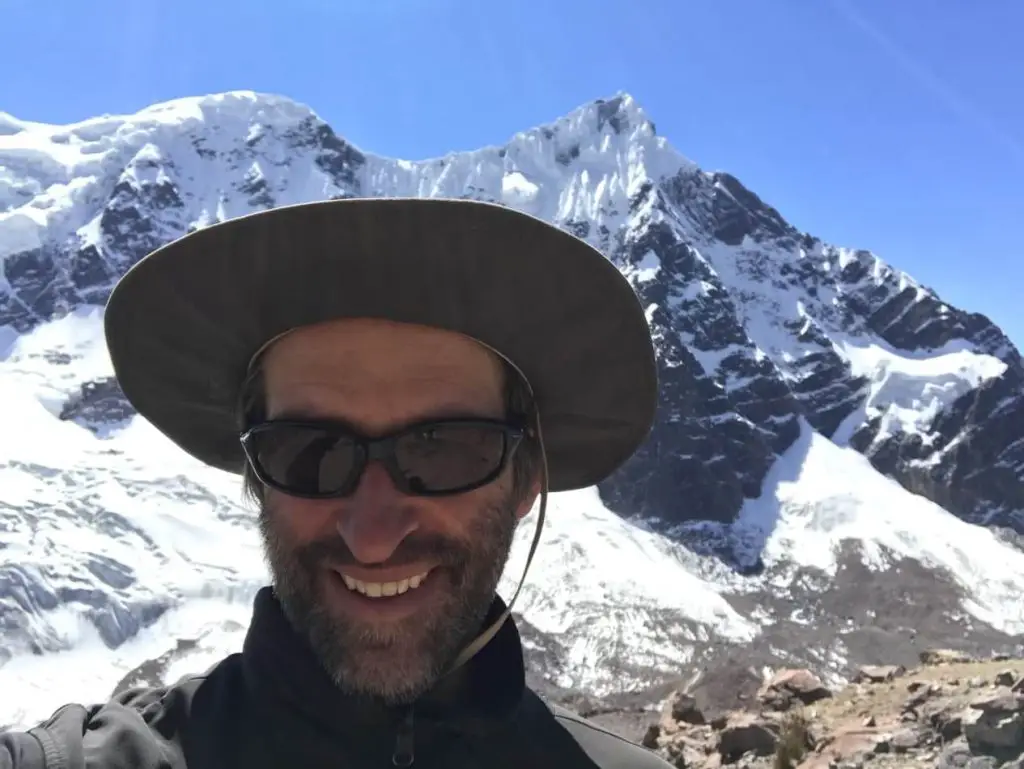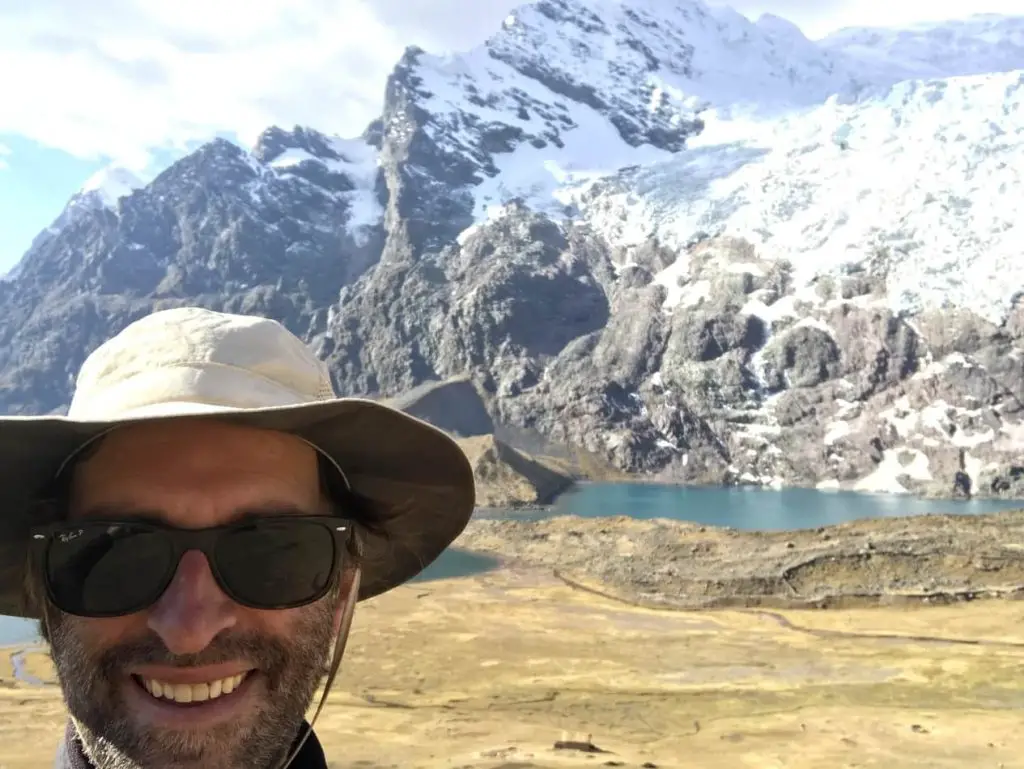There is a reason why trees don’t grow at high altitudes; there isn’t enough up there to support their existence. There is less moisture and thinner air. Those same tree-killing conditions also put a significant amount of stress on your body while hiking at high altitudes. This is post is about how to prepare for hiking at high altitudes.
To prepare for a high altitude hike, an individual should seek medical advice. In the months before the hike, an individual should engage in training walks and aerobic exercise with increasing difficulty. In the days before the hike, an individual should go on acclimatization hikes at high altitude.
If you want to get physically prepared for a high altitude hike, then this post is for you. There are no guarantees that you will not succumb to the effects of high altitude, but through proper preparation and some simple tricks, you can increase your odds of success.

1. Prepare for Less Air.
It cannot be stated enough that your biggest concern when hiking at higher altitudes is the lack of abundant air. The atmosphere that encapsulates the earth is thickest at the surface and gets increasingly thinner as you reach higher altitudes.
I live close to sea level in South Texas and the oxygen content in air is a little more than 20%. At 10,000 feet (3,048 meters) above sea level the percentage of oxygen in the air drops to just over 14%. That is a 25% drop in the molecule that your body needs to produce energy: oxygen!
When you are hiking at elevations above 9,000 or 10,000 feet you will experience a marked drop in your bodies performance. With 25% less fuel for your cells, you will not produce as much energy and routine tasks will be more difficult.
In Peru last year we were camping at around 14,000 feet and were climbing up to mountain passes above 17,000 feet each day. You can check out my experience here. At 17,000 + feet the percentage of oxygen in the air was at around 11% or almost half of what it is in South Texas where I live.
The upshot of all of this is that you need a plan to prepare for a high elevation hike. With less oxygen, your body is going to need to be in tip-top shape. Read on to see my tips and hacks for getting ready physically for hiking with less oxygen at high altitudes.
Here is a basic outline of the training I did to get ready for a high altitude hike in Peru.
| Sunday | Mon | Tues | Wed | Thurs | Fri | Sat |
| Week 1 | swim 800 meters | 0:20 urban hike | swim 800 meters | 0:20 urban hike | swim 800 meters | 1:00 walk |
| Week 2 | swim 800 meters | 0:20 urban hike | swim 800 meters | 0:20 urban hike | swim 800 meters | 1:15 walk |
| Week 3 | swim 900 meters | 0:25 urban hike | swim 900 meters | 0:25 urban hike | swim 900 meters | 1:30 walk |
| Week 4 | swim 900 meters | 0:30 urban hike | swim 900 meters | 0:30 urban hike | swim 900 meters | 1:45 walk |
| Week 5 | swim 1000 meters | 0:30 urban hike | swim 1000 meters | 0:30 urban hike | swim 1000 meters | 2:00 walk |
| Week 6 | swim 1000 meters | 0:30 urban hike | swim 1000 meters | 0:30 urban hike | swim 1000 meters | 2:15 walk |
| Week 7 | swim 1100 meters | 0:35 urban hike | swim 1100 meters | 0:35 urban hike | swim 1100 meters | 2:30 walk |
| Week 8 | swim 1100 meters | 0:35 urban hike | swim 1100 meters | 0:35 urban hike | swim 1100 meters | 2:45 walk |
| Week 9 | swim 1200 meters | 0:35 urban hike | swim 1200 meters | 0:35 urban hike | swim 1200 meters | 3:00 walk |
Once I reached the level in week 9, I did not increase my workouts. I began to focus on reducing my swim times to increase my cardiovascular fitness. I also focused on covering more ground on my long walks on Saturdays.
2. Get a Medical Physical Examination.
The information provided in this post about getting prepared for a high elevation hike is worthless if you have an underlying condition. Go get a physical and tell your doctor that you are going to train for a high elevation hike.
With a clean bill of health, you can now start the work to get ready for a high elevation hike.

3. Go on Increasingly Longer Training Hikes.
You will be facing two distinct physical challenges on your hike. You will be walking for extended periods of time on both uphill and downhill grades. You will also be doing all of this with less oxygen. You need to have a body that is conditioned to walking for many hours, AND you need to have an efficient cardiovascular system.
How you get into walking shape is up to you but I suggest that you create a plan and stick to it. I shared my training plan in the table above. Everyone is different so find a plan that works for you and get to it.
How many weeks do you have before your hiking trip? Even if you only have a short amount of time to prepare, every little bit helps.
I had about 5 months before my trip to Peru to prepare. I went on increasingly long training walks on Saturdays and engaged in three moderate walks during the work week.
It is not the distance that matters so much as the time. If you are not accustomed to walking for an hour or more, what you will notice is that your muscles are relatively fine on a long walk while your feet, hips, and lower legs will suffer.
I hike at about 3 miles per hour which is roughly 7,200 steps per hour. That is a subtle but persistent pounding that after even one hour can really wreak havoc on your body.
Your goal in your training hikes is to increase the time that you walk. Do not worry so much about the distance. My son and I started at one hour on the first Saturday and then added 15 minutes per week until we arrived at a total of three hours of walking. This only took two months. From there we continued to walk three hours each Saturday and obviously, it became easier and easier.
During the week I went on three training walks at work for about 30 minutes. I would go on mini-urban hikes in buildings in my area at lunch walking from one building to the next and then climbing the stairs to the top floor.
If you are a runner you can substitute the shorter weekday hikes with runs.
The weekday training hikes are not as important as the long training hikes. Do not skip the long hikes! Weekly long walks of increasing distance are the single most important thing you can do to prepare for a multiday hike at high elevations.
We arranged our trek in Peru with guides and ‘campesinos’ that used ponies to carry our gear from campsite to campsite. This means that we carried very light day packs. For those planning to carry all of your gear then you should carry a similar amount of weight on your long training hikes.
By going on longer and longer hikes on the weekend I was able to prepare my body for the punishment of seven to eight hour hikes each day in Peru with minimal pain to my lower extremities. But the Ausangate trek is not a difficult hike technically. It is known for its high elevation, and that is why I worked hard to imporve by cardiovascular fitness.
4. Improve Your Cardiovascular Fitness.
With half as much oxygen to breathe on Palomani pass at 17,000+ feet it was not the walking but the thin air that challenged us the most. We had prepared for long hikes, but we did all of our training at near sea level.
If like most people you live at or around sea level then you will want to also include cardiovascular workouts in your training program. I chose to swim, but running, cycling, or any other aerobic activity will work.
Swimming is great for preparing for a hike because it gives your lower body a chance to recover. I swam about 1,000 meters with minimal breaks three times per weak on the days I was not walking. I pushed myself each week to increase my speed which directly contributed to a boost in my body’s ability to utilize available oxygen to produce energy.
As you improve your cardiovascular health you will start to see gains in your weekly long walks as well. The goal is to become a very efficient hiker so that when you are tested at high elevations you have some reserves to draw on.
I trained faithfully for months on that schedule above in the table, and yet on some of the passes approaching 17,000+ feet, I was reduced to a rest-step to keep moving forward. Had I not trained so hard, I would have suffered much more than I did.
If you do long walks before your trip then you can essentially rule out any discomfort from the subtle but constant pounding that will result from hours of walking at higher elevations. The great equalizer will be the lack of available oxygen to feed your muscles.
A sustained training program that boosts your cardiovascular system will save you on the high elevation passes and trails on your hike.
5. Train with the Gear You Will Bring.
I have been wearing Danner boots my entire life. I was born and raised in Vancouver, Washington, right across the Columbia River from Portland, Oregon – the home of Danner Boots.
I used to go with my cousins to the factory store near PDX airport and buy Danner boots with minor defects for half the retail price. I have always wanted a pair of the Danner Moutain Light hiking boots, so I ordered a pair from Danner about four months before my Peru departure.
The Danner Mountain Lights were on backorder and they pushed the delivery date back twice so I canceled the order and went for a pair of Danner Mountain 600s instead. I saved $200 and fell in love with the fit and comfort.
I knew the $360 Danner Mountain Lights needed some considerable break-in time and that if I arrived in Peru with a new pair of these I would have added blisters to high altitude hiking discomfort.
The Danner Moutain 600s were perfect and I walked 2:30 the first time I wore them with zero blisters in South Texas in 100 degrees Fahrenheit. You can check out my review here.
The point is that you if you plan to buy new shoes for your high elevation hike, DO NOT WAIT until a few weeks before your trip. Train in the shoes or boots that you plan to wear on the hike.
Similarly, if you carry a backpack, even a light daypack like I did, you need to get some mileage carrying that backpack. The rubbing, chafing, and discomfort you might encounter on your training hikes will pay off when you are struggling to breathe above the timberline.
Avoid adding anymore physical distress to your high elevation hike. One way to do this is to train with the gear that you plan to bring on the hike.
I wore the same wool socks I planned to bring to Peru while walking three hours in 100 degrees Fahrenheit in South Texas on my long training hikes. I prepared my feet for the same conditions they would face in Peru. My training hikes were only three hours, while in Peru, we walked 6 to 8 hours each day – with zero blisters.
6. Arrive Early and Do Acclimatization Hikes.
I was fortunate to have two weeks for our trip to Peru. The first week we spent seeing the sights in the Sacred Valley. We arrived in Cusco and then descended in elevation somewhat to Ollantaytambo and stayed in a small town hotel.
We visited Machu Pichu and went on some hikes around Ollantaytambo. I tried Cuy, not a fan, though Ollantaytambo is not the place to try it, apparently.
A few days before our hike around Ausangate, we went back up to Cusco at 11,000 feet and went on a few training hikes with our guides. If you don’t remember anything else from this blog post, you need to remember to arrive early at the elevations you plan to hike and go on some training hikes.
This is my number one hack. The lack of oxygen feels oppressive when you are trying to exercise at high altitudes, but your body will adjust after a few days. By going on some shorter acclimatization hikes, you will be more prepared for high altitude hiking rigors.

